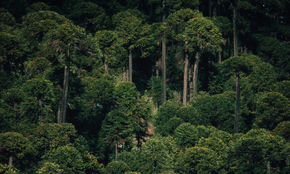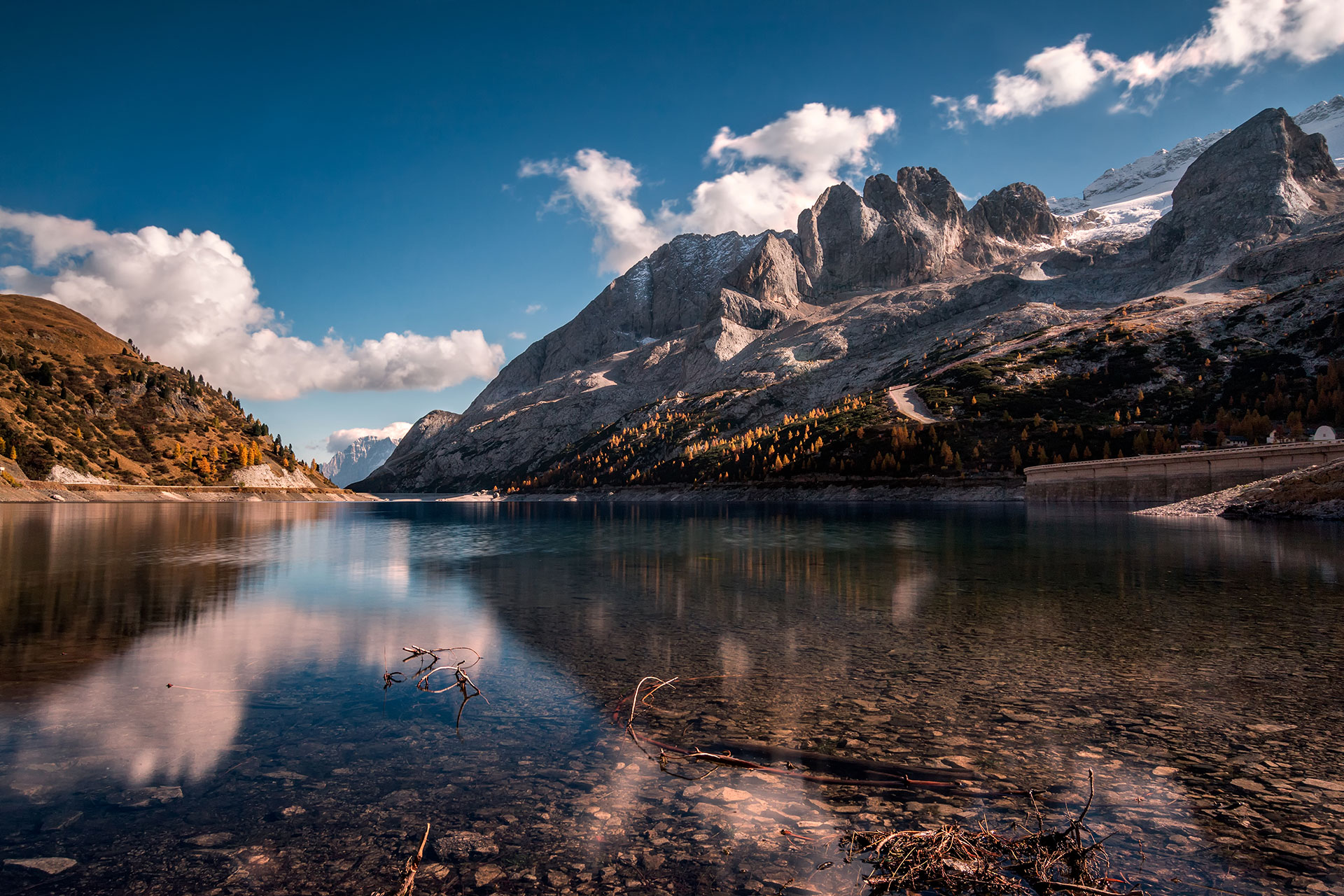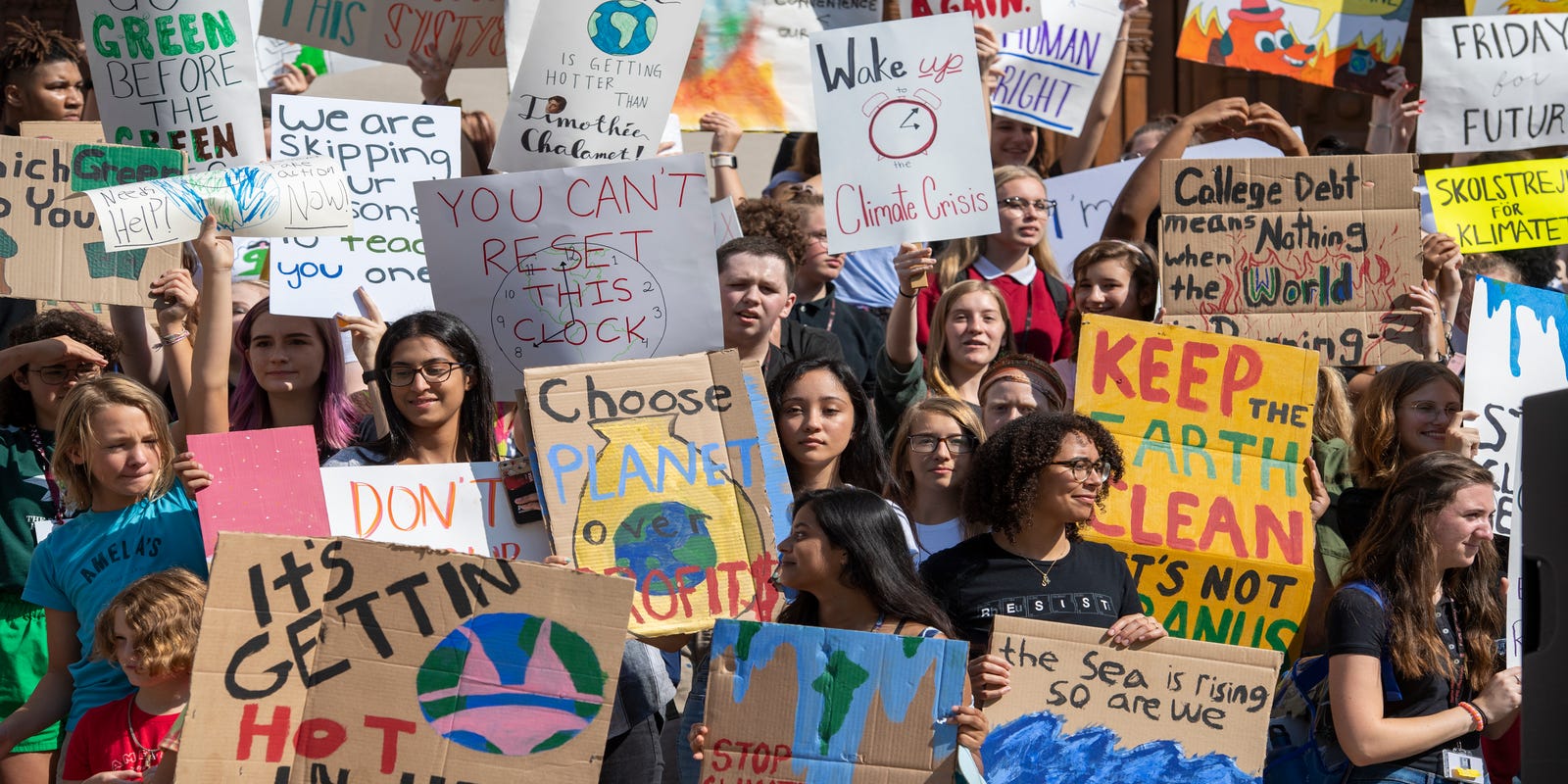
REDUCING EMISSIONS FROM DEFORESTATION
Forests are a vital resource for life on earth. They provide invaluable environmental, social and economic benefits to us all. Forests improve air and water quality, reduce soil erosion and act as a buffer against global warming. The forest industry also
Forests are nature’s greatest technology for combating climate change: they naturally absorb carbon dioxide (CO2), reducing the amount of this heat-trapping gas in our atmosphere. When forests are not managed responsibly, they release large quantities of C02 into the atmosphere. Deforestation and degradation are the largest sources of C02 emissions after the burning of fossil fuels. Scientists estimate up to 13% of global carbon emissions come from deforestation.
WWF saves forests and fights climate change by:
- Supporting REDD+, which offers financial incentives to developing countries that create and implement strategies to manage and use their forests responsibly.
- Creating multi-million dollar funds to properly manage forests that are designated as protected.
- Working to end illegal logging.
- Ensuring that global climate change agreements reduce forest loss and degradation.
- Helping countries and regions assess the benefits nature provides under different development and climate change scenarios.
HOW YOU CAN HELP
If we hope to slow the climate crisis, we have to remake our world. Limiting global heating to 1.5 C degrees—the threshold for what scientists call “multiple system collapse”—means transforming our systems of food production, land management, energy industries, transportation, international trade, and our very culture of consumption.
Reducing food waste
This one has been in Project Drawdown’s top 5 for the last several years, because food waste is one of the world’s biggest sources of carbon emissions. It’s also an issue that demands a wide range of responses, including individual, collective, and global.
Individual: Start by buying less food and shopping more frequently, if possible. If your schedule doesn’t permit that, you can prevent food waste by choosing fruits and veggies that freeze well. Chop most of your produce haul when you get home and freeze it. Added bonus: this also cuts down on meal prep time.
Collective: Find and support your local community compost center by bringing food scraps, volunteering, and/or donating.
Global: In some countries, as much as 40% of food waste occurs in the supply chain itself. This is a terrible problem with straightforward solutions. Do some research on legislative initiatives to reduce food waste in your country and write to your government representatives in support of these policies.
Plant-rich diets
Eating a mostly plant-based diet is another solution that regularly appears in Project Drawdown’s top 5. Going plant-based (or mostly plant-based) is one of the most impactful actions you can take as an individual, and it’s also an approach that has huge potential if the masses follow suit.
Individual: Gradually reduce your meat consumption while increasing protein-rich foods like beans, nuts, and whole grains. If you do consume meat, think of it as an embellishment to the meal rather than the main course (added bonus: your health will likely improve dramatically too). Choose Rainforest Alliance Certified products (when you can’t buy local), which use ingredients sourced from farms that are required to conserve—and in the case of large farms, restore––native forests.
Collective: If you live in a country where heavy meat consumption is part of the culture, consider taking on the role of ambassador for a plant-rich diet. Start by hosting small dinner gatherings to showcase your most delicious plant-based dishes. Ask your favorite restaurants for plant-based offerings. If you happen to know any chefs, invite them to join you in seducing your friends away from heavy meat consumption through the pleasure of taste.
Global: In some countries, government subsidies to the meat and dairy industries keep the cost of meat and dairy products artificially low and obscure the ecosystem and human costs of heavy meat production. If you live in such a country, contact your local government representatives and urge them to oppose these subsidies.
Bolstering the position of girls and women
Project Drawdown says that expanding education for girls and increasing access to family planning could lead to reductions as high as 85.4 gigatons of carbon dioxide by 2050. Education helps women respond better to climate shocks. And giving women the knowledge and tools they need for reproductive control has a multitude of benefits for the planet.
Individual: Volunteer for and support mentoring and tutoring programs in your area aimed at keeping girls in school. If you have science skills, share them: Only 30 percent of the world’s researchers are women.
Collective: Get involved at a district level to strengthen educational initiatives targeting girls. Support STEM programs for girls and organizations that promote women’s reproductive knowledge and access to healthcare.
Global: While developing regions have achieved or are close to achieving gender parity at the primary school level, disparities widen in secondary and tertiary education, particularly in sub-Saharan Africa, Oceania, and South and West Asia. Not surprisingly, some of the deepest discrepancies exist in the poorest countries. Globally, you can support organizations, including the Rainforest Alliance, that work to ensure access to education in rural areas.
Tropical forest protection and restoration
There are many reasons to protect and restore forests, not least of all because they sequester carbon. Project Drawdown estimates that protecting currently degraded land and allowing natural growth of tropical forests to occur on 161-231 million hectares would sequester 54.5 to 85.1 gigatons of carbon dioxide by 2050.
Individual: Choose Rainforest Alliance Certified products, for those essentials you can’t buy locally, such as coffee, bananas, tea, and chocolate. Products bearing our green frog seal are sourced from farms that use responsible methods to maximize yield on existing cropland.
Collective: You can amplify your individual impact by supporting our work to train farming and forest communities in sustainable land management, agroforestry, and reforestation.
Global: Support Indigenous and local land rights around the world. Not only is this the right thing to do, it is better for climate: Numerous studies show that Indigenous people are the most effective forest guardians, and we need their leadership now more than ever.
Agroforestry
Some crops, like coffee and cocoa, grow beautifully under the shade of larger trees. According to Project Drawdown, an acre of agroforestry can achieve carbon sequestration rates comparable to those of afforestation and forest restoration, with the added benefit of producing food.
Individual: Choose shade-grown coffee (preferably Rainforest Alliance Certified) at the supermarket. There are also some herbs that grow well in shade, so don’t hesitate to plant beneath trees in your home garden. The more greenery you create, the more carbon you help pull from the atmosphere.
Collective: Encourage your favorite coffee vendors and cafes to offer only shade-grown coffee. That way your local community of coffee-lovers can support agroforestry, too, without even trying.
Global: Support organizations that promote coffee and cocoa agroforestry through training and certification, including the Rainforest Alliance.

 Our world is changing faster than anyone predicted. Already, freshwater supplies are shrinking, agricultural yields are dropping, our forests are burning, and rising oceans are more acidic—all, in part, due to a warming climate. As our natural world changes around us, so does our way of life. Coastal home values drop as insurance premiums rise; drought reduces feed for American farmers’ cattle and water for their crops; more pollen and dust in the air aggravates asthma and allergies in kids and adults alike.
At WWF, we believe we can fight this consequential threat and build a safer, healthier and more resilient future for people and nature. We must rethink the way we produce and consume energy, food, and water; protect the world’s forests; and help people prepare for a changing world.
Achieving this future will require action by everyone, and we are already well on our way. People are using their collective voices to demand change. Businesses are making investments in clean energy, already creating local jobs and stronger economies. Communities are redesigning their roads, buildings, airports, and railroads to make them climate resilient. And nations around the world are committed to delivering on a landmark global plan to curb climate change, known as the Paris Agreement.
For decades, WWF has engaged with millions of Americans, leading businesses, and government leaders to prepare for inevitable change and reduce the emissions that drive climate change.
Our world is changing faster than anyone predicted. Already, freshwater supplies are shrinking, agricultural yields are dropping, our forests are burning, and rising oceans are more acidic—all, in part, due to a warming climate. As our natural world changes around us, so does our way of life. Coastal home values drop as insurance premiums rise; drought reduces feed for American farmers’ cattle and water for their crops; more pollen and dust in the air aggravates asthma and allergies in kids and adults alike.
At WWF, we believe we can fight this consequential threat and build a safer, healthier and more resilient future for people and nature. We must rethink the way we produce and consume energy, food, and water; protect the world’s forests; and help people prepare for a changing world.
Achieving this future will require action by everyone, and we are already well on our way. People are using their collective voices to demand change. Businesses are making investments in clean energy, already creating local jobs and stronger economies. Communities are redesigning their roads, buildings, airports, and railroads to make them climate resilient. And nations around the world are committed to delivering on a landmark global plan to curb climate change, known as the Paris Agreement.
For decades, WWF has engaged with millions of Americans, leading businesses, and government leaders to prepare for inevitable change and reduce the emissions that drive climate change. REDUCING EMISSIONS FROM DEFORESTATION
Forests are a vital resource for life on earth. They provide invaluable environmental, social and economic benefits to us all. Forests improve air and water quality, reduce soil erosion and act as a buffer against global warming. The forest industry also
Forests are nature’s greatest technology for combating climate change: they naturally absorb carbon dioxide (CO2), reducing the amount of this heat-trapping gas in our atmosphere. When forests are not managed responsibly, they release large quantities of C02 into the atmosphere. Deforestation and degradation are the largest sources of C02 emissions after the burning of fossil fuels. Scientists estimate up to 13% of global carbon emissions come from deforestation.
WWF saves forests and fights climate change by:
REDUCING EMISSIONS FROM DEFORESTATION
Forests are a vital resource for life on earth. They provide invaluable environmental, social and economic benefits to us all. Forests improve air and water quality, reduce soil erosion and act as a buffer against global warming. The forest industry also
Forests are nature’s greatest technology for combating climate change: they naturally absorb carbon dioxide (CO2), reducing the amount of this heat-trapping gas in our atmosphere. When forests are not managed responsibly, they release large quantities of C02 into the atmosphere. Deforestation and degradation are the largest sources of C02 emissions after the burning of fossil fuels. Scientists estimate up to 13% of global carbon emissions come from deforestation.
WWF saves forests and fights climate change by: